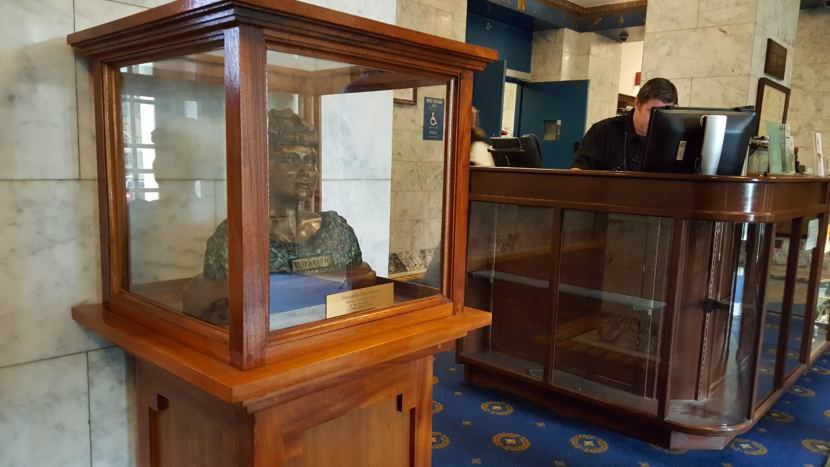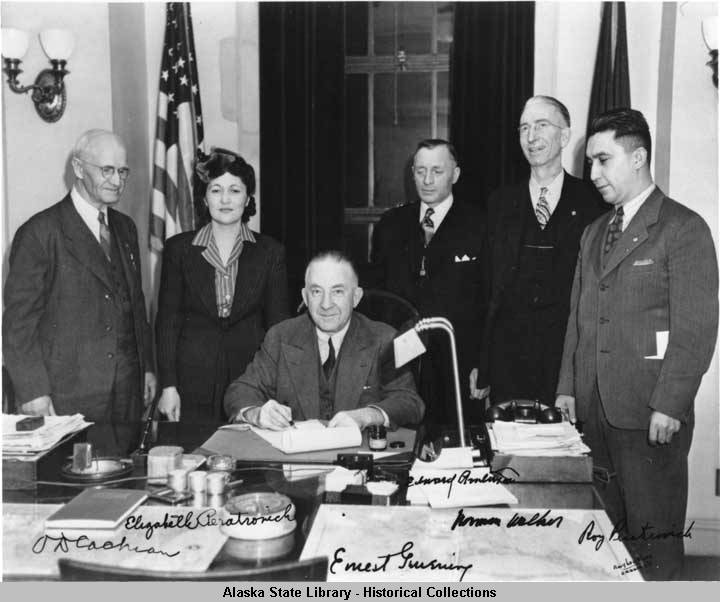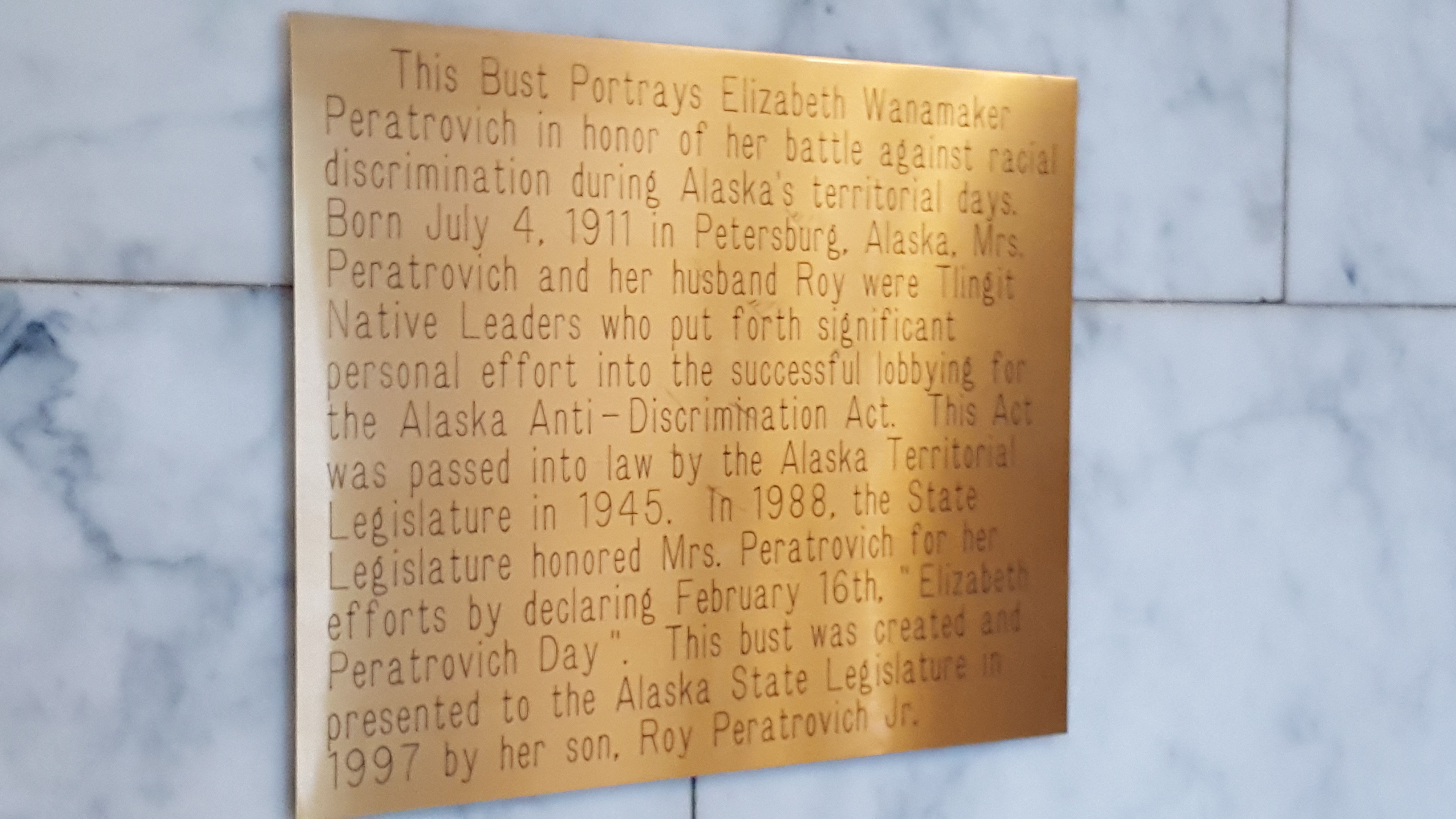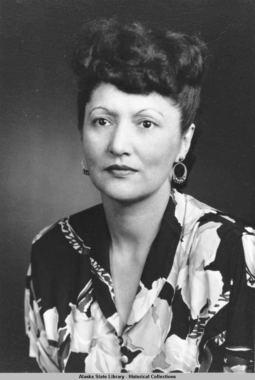
The 2020 dollar coin honoring Elizabeth Peratrovich will either have a literal image of the Alaska Native civil rights leader on it, or a Raven holding a key — a symbol of her Tlingit Raven moiety and her role in agitating for an anti-discrimination law.


While a final decision by the head of the Treasury Department is months away, a lot has gone into getting the Peratrovich onto the flipside of the Sacagawea dollar coin up to this point.
Since 2009, the reverse of Sacagawea dollar coins has been redesigned annually to honor Native American heritage. The coins aren’t made for general circulation anymore, though coin collectors do buy them directly from the U.S. Mint above face value.
“For each year we go to our staff of artists and they generate designs,” said Mike White, who has been with U.S. Mint for 28 years. “We consult with various Native American groups,” White said. “In the instance of the 2020 (coin) we’re consulting with the Tlingit tribe.”
A team of five artists in Philadelphia worked with various stakeholders on coin designs, including the Central Council of Tlingit and Haida Indian Tribes of Alaska, the Sealaska Heritage Institute and U.S. Sen. Lisa Murkowski.
The artists want to ensure the designs fit historically and culturally.
“We’ve got a very talented group of artists that work on them,” White said. “When we go before the committees, we try to give them a real variety of designs and a good representation of whatever the theme is chosen that year.”
The organizations he’s referring to are the Citizens Coinage Advisory Committee and the Commission of Fine Arts. The coin advisory committee endorsed the Raven perched on a door handle grasping a key. The fine arts commission chose a design showing a three-quarters profile of Peratrovich with a symbol of her Tlingit Raven moiety.
Thomas Luebke is secretary of the Commission of Fine Arts. His background is in architecture. He said coins aren’t that different from designing sculptures and buildings.
“It’s sort of graphic and it’s sort of 3-D at the same time,” he said. “It’s interesting to try to convey the meaning in a symbolic way on a very small medium. I think that everyone likes to see the mint stuff.”

The abridged version of Peratrovich’s story begins when she and her husband moved from Klawock to Juneau in the 1930s or 1940s. As Alaska Native Sisterhood Grand President Cecelia Tavoliero tells it, the couple faced housing discrimination because they were Alaska Native.
“They found there were barriers, and they were not subtle like they are now. They were very blatant,” Tavoliero said. “They were disrespected and told that they couldn’t live in certain areas. They took objection to that and decided to do something about it.”
With the support of Alaska Native Sisterhood and Alaska Native Brotherhood, Tavoliero said Peratrovich took the fight to Alaska’s territorial legislature.

“Seeming like David and Goliath because there were very many of the senators speaking very blatant negative about the Native people, basically calling the Native people inferior,” Tavoliero said.

Peratrovich is credited with successfully advocating for the passage of the Alaska territory’s Anti-Discrimination Act of 1945.
Alaska became the first U.S. state or territory with such a law, which guaranteed equal voting rights and equal access to commercial accommodations and services – years before the civil rights movement protesting racial segregation in the Lower 48.
“With her testimony, even though there were other folks involved in trying to get the bill passed, the anti-discrimination bill, she’s the one that pushed the final stone over the mountain,” Tavoliero said.
Raeanne Holmes, the communications coordinator for the Tlingit and Haida Central Council, said the coin is an exciting recognition.
“It’s the perfect way to mark the 75th anniversary of the state of Alaska’s Anti-Discrimination Act of 1945. We can’t think of a better way to honor the memory of her as our civil rights leader and that landmark passage.”
